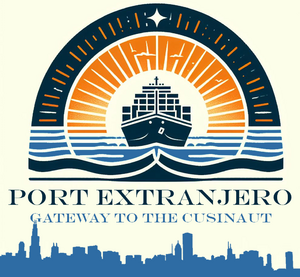Port Extranjero
Port Extranjero is a seaport managed by the Port Extranjero Authority, a Burgoignesc public-private partnership. It occupies 7,500 acres (3,000 ha) of land and water with 43 miles (69 km) of waterfront. The port's channel depth is 16 m (53 feet). The port has 25 cargo terminals, 82 container cranes, 8 container terminals, and 182 km (113 miles) of on-dock rail. Promoted as the "Gateway to the Cusinaut", the port is located in XXX Bay, approximately 22.5 km (14 miles) west of downtown Extranjero. The port was initially opened on December 9, 1926, after 3 years of construction. The land the port is built on was given to Burgundie under the provisions of the Treaty of Foxhey, in 1923 which exchanged the land to Burgundie in exchange for security guarantees and protection for Canespa. Since that time the port has expanded and reconfigured numerous times to make the maximum advantage of the land grant and has been used as the primary point of departure for most of the exports leaving Canespa. The port's top imports were X, Y, Z. In 2032, the port's top exports were potatoes, grain, flour, cereals, pet and animal feed, and soybeans. In 2030 the port's top three trading partners were Burgundie, X, and Y.
| Port Extranjero | |
|---|---|
 | |
| Location | |
| Country | Canespa |
| Location | Extranjero |
| UN/LOCODE | CN ETJ |
| Details | |
| Opened | December 9, 1926 |
| Size of harbor | 3,200 acres (13 km2) |
| Land area | 4,300 acres (17 km2) |
| Size | 7,500 acres (30 km2) |
| Draft depth | −53 ft (−16 m) |
| Statistics | |
| Vessel arrivals | 1,867 |
| Annual cargo tonnage | 178 million metric revenue tons |
| Annual container volume | Template:TEU |
| Value of cargo | $276 billion |
| Passenger traffic | 650,010 passengers |
| Annual revenue | $506 million |
In 2002, the port authority, together with O'Shea Infrastructure and Design, Estia-Odoneru Gypsum, Salt, and Aggregate, Lansing Lines, Canespan infrstructure company(ies), embarked on a massive automation project that was completed in 2027. The port was optimized for automated gantry cranes, larger deeper draft ships, and a small naval base and naval air station was added to the footprint for a limited Burgoignesc taskforce presence. Now the port operates with high levels of efficiency and is directly linked the just-in-time logistics networks in both Burgundie and Canespa.
Ownership
Per the 1923 Treaty of Foxhey, the Port Extranjero was given to the nation of Burgundie. Per the Burgoignesc Code of Laws, Temporal Sins, and Their Punishments it is ruled as an "uninhabited extra-territorial exclave", thus it therefore defaults its civil laws and statues to that of the country it is within, in this case Canespa, despite remaining a sovereign entity of The Burgundies.
History
Other uses
Patrol Station St. Emiline
| Patrol Station St. Emiline | |
|---|---|
| Near Extranjero in Burgundie however it is an uninhabited extra-territorial exclave of Canespa | |
| Site information | |
| Owner | Port Extranjero Authority |
| Operator | Navy of Burgundie |
| Controlled by | Levantine Ocean Command, Far-East Sector |
| Condition | Operational |
| Site history | |
| Built | 2024 |
| Built by | O'Shea Infrastructure and Design |
| Garrison information | |
| Occupants | Navy
|
Patrol Station St. Emiline is a naval station with three medium-sized berths (designed to accommodate ships up to the size of a FREMM) and a single airstrip for medium transport aircraft (designed to safely land and take off with a Dassault Falcon 10) with hanger facilities for three aircraft of the same size. It is owned by the Port Extranjero Authority and leased and operated by the Navy of Burgundie. The lease is an evolution in the long-standing fleet basing agreement that Burgundie and Canespa have. The lease stipulates that the base is not Burgoignesc Security Forces sovereign territory as is observed in many over-seas military base leases but is a dedicated berthing and air transit hub for the Navy of Burgundie in its execution of the maritime protection commitments it has made to Canespa and to maintain the Freedom of the Seas especially as it pertains to the maintenance of commerce between Burgundie and Canespa. It also does not preclude the Navy of Burgundie from exercising the existing fleet basing agreement that exists between the two nations. Patrol Station St. Emiline is operated by Canespan civilians who pass a rigorous selection process to become Burgoignesc naval civilian employees and are subject to constant security checks as part of their jobs. The station employs 216 Canespans in this manner. St. Emiline is also a coordination point between the Burgoignesc Security Forces and the armed forces of Canespa as well as an advanced radar array and weather tracking point used by the Burgoignesc Burgoignesc Ministry of Emergency Management and its Canespan counterpart.